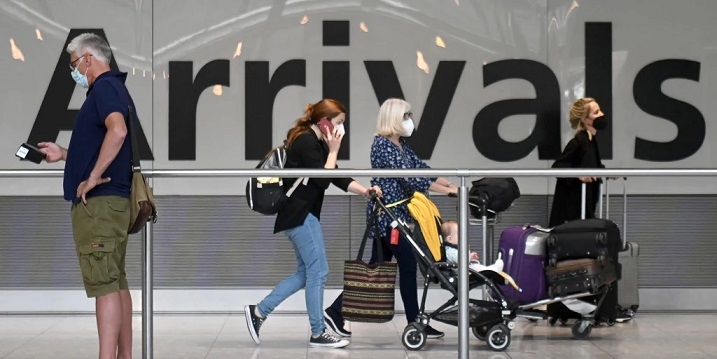
WASHINGTON – The nation’s longest-ever government shutdown entered a critical new phase Monday as House Speaker Mike Johnson (R-La.) summoned representatives back to the Capitol to vote on a Senate-forged deal to reopen the government.
The move signals a potential end to the 41-day crisis, even as its cascading effects—from snarled air travel to legal fights over food stamps—intensified across the country.
The Senate narrowly approved the first stage of the agreement over the weekend, setting the stage for a decisive vote in the House. The deal, which would fund the government through January 30, required a 60-vote threshold to pass, drawing support from a coalition of 52 Republicans, seven Democrats, and one independent.
“There’ll be long days and long nights here for the foreseeable future to make up for all this lost time that was imposed upon us,” Johnson told reporters, indicating he expected votes this week but did not specify a day. For the government to reopen, the House must pass the Senate’s bill and send it to President Donald Trump for his signature.
A Fragile Legislative Compromise
The Senate deal represents a hard-won compromise, breaking a weeks-long stalemate. Key provisions include reversing all shutdown-related layoffs, guaranteeing back pay for federal workers, and funding the Supplemental Nutrition Assistance Program (SNAP) through September.
Notably, the agreement sidesteps a key Democratic demand: the extension of enhanced Affordable Care Act tax credits set to expire at the end of December. In a significant concession to Democrats, however, Republicans have guaranteed a vote in December on a bill of Democrats’ choosing to extend those subsidies, which help over 20 million Americans afford health insurance.
Cascading Crises: From Skies to Kitchens
As lawmakers maneuvered in Washington, the real-world impacts of the shutdown reached a boiling point, most visibly in the nation’s air travel system.
Air traffic controllers, who have been working without pay since October 1, missed their second paycheck on Monday. Worsening staffing shortages, which transportation officials called severe over the weekend, have forced the Federal Aviation Administration to mandate escalating flight cuts for commercial airlines. The disruptions have led to thousands of flight cancellations and delays, ranking among the worst for air travel since early 2024.
The crisis prompted a volatile response from President Trump, who demanded on social media that “All Air Traffic Controllers must get back to work, NOW!!!” and threatened to dock the pay of those who had taken time off. His comments sent airline stocks downward and drew scrutiny, as officials were unclear on the legal mechanism for such penalties.
Simultaneously, a parallel crisis unfolded for millions of low-income Americans dependent on federal food assistance. The availability of SNAP benefits for 42 million people has been caught in a whirlwind of legal challenges since the Trump administration initially planned to suspend November payments.
A series of conflicting court orders has sown confusion. While a federal judge in Rhode Island had previously ordered the full funding of benefits, Supreme Court Justice Ketanji Brown Jackson temporarily halted that ruling on Friday. On Monday, a judge in Boston blocked a Trump administration directive hat sought to force states to “undo” steps they had taken to issue full benefits.
The administration has argued that it lacks the funds to fully pay for SNAP without a congressional appropriation, telling courts that judges cannot force it to find money “beyond a metaphorical couch cushions.”
A Nation Awaits a Resolution
The Senate deal offers a path to resolve these interconnected crises. Its passage would not only fund SNAP through the fiscal year but also ensure air traffic controllers and other federal employees receive their back pay.
Yet, the agreement’s fate remains uncertain until it clears the House and reaches the President’s desk. As the political process grinds forward, the shutdown’s consequences are providing a stark, daily reminder of the vast footprint of the federal government and the high stakes of its prolonged closure. The nation now watches to see if Washington can finally end a standoff that has, quite literally, kept both travelers and the most vulnerable Americans stranded.